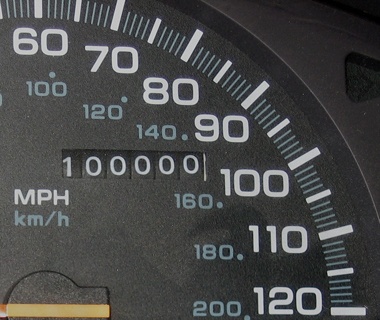I track where I go — whether I’m traveling by car, train or plane — for several reasons:
I can write off 50.6 cents for every business mile I drive in 2008. I can plan my trips more efficiently if I have a good idea of how often I’m traveling, and where. I can easily backtrack, if need be, even long after the travel.
But finding a method for tracking travel, especially mileage, that isn’t time consuming, can be difficult. I learned to track mileage from my mother, who, to this day, writes down her mileage and location every time she parks the car on the back of her most recent gas receipt. It gets the job done, but it seems like she has to devote a lot of time to the process, from the actual time spent writing down information to processing it later on. When picking a mileage tracking system — or creating your own — there are some very specific factors that you should keep in mind: Documentation needs: If you’re expecting to be reimbursed for your mileage by an employer or client, know from the beginning what sort of documentation you’ll need to hand over — will a travel log suffice? will you need gas receipts? will your travel need approval? The same goes for any mileage you intend to claim as a deduction on your taxes. If you’re based in the U.S., unless you get audited, you need only minimal documentation. It’s if you get audited that you’ll need to be able to pull out some paperwork to show that you really do drive extensively for your job. What kind of records, you might ask: Kelly Erb, of taxgirl, says, “The best proof is written records.” The key, Kelly says, is that they have to be contemporary — meaning you tracked your travels as you made them. Electronic tracking is fine as long as you keep up with it in the same way you would keep up a written system. She recommends tracking mileage and the purpose of a trip, as well as keeping receipts for both tolls and gas. Kelly offered up another suggestion as well: “If you use E-Z pass or something similar, you will actually have a printed record of your trips compiled for you.” Other variables: Are you tracking your travels to help make your weekly round of errands more efficient? Or are you comparing your mileage to your spending on gasoline? If you need to track other variables, you’ll have to plan for that fact from the beginning. You may need to include your gas expenses or the number of times in a month that you visit a given location in a month in your tracking system. If you’re good about record keeping in general, you may not need to stress too much about tracking miles: say you keep a calendar with pretty precise records of where you are at any given time — business names and addresses. If you don’t detour too often, you can just calculate the distance from one appointment to the next (just plug addresses into either GoogleMaps or Mapquest). But for those of us who would rather keep track of our mileage as we go, several web applications can serve the purpose admirably. Personally, I like Jott. As I reach a location, I can just call up Jott and record a message stating my mileage, my current location and my purpose (which makes things much easier when I need to sort out my business travel from everything else). And because Jott will send my recordings to my email, I can set up filters based on a few words or even run searches for particular locations. The only wrench in my system is the occasional voice recognition issue: I go to plenty of places with apparently unrecognizable names. But I can always go back to Jott and listen to a particular recording again. I just drop my Jotts into a spreadsheet — theoretically on a monthly basis, but realistically every few months — with a few formulas set up to figure out not only my total travels, but also my totals within categories. I try to phrase my Jotts in such a way that I can just cut and paste while doing something less than intellectually challenging, like watching television. But I can think of plenty of variations on this theme that depend on how you connect to the internet and which applications you like: you could text messages to a Twitter account, keep files on a PDA or hack your car and a GPS device together so they can keep track of mileage without your interference. The key difference between these techniques and an old-school mileage book (which you can get for free at your local H&R Block office if you don’t like high tech solutions) is that the information is already typed up. With far less effort than handling a stack of receipts, you’ll be able to manipulate your travel information: even the simple task of adding up a total number of miles traveled seems monumental with my mother’s stack of annotated gas receipts. Many people say that the only acceptable method of tracking is using pen and paper, preferably kept in the car. But think how much time adding up those numbers are going to take, while I’m dumping my Jotts into a spreadsheet that will do all the math for me?
